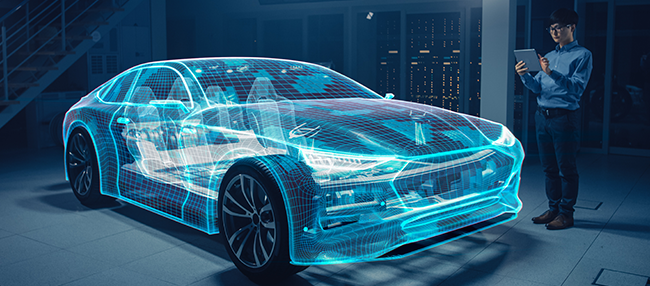Preparing for the Future of E-Mobility Lubrication
The e-mobility landscape is constantly evolving. With these shifts, lubrication requirements for these applications are also changing. We sat down with Nye’s Jeff Wheeler to ask him about the latest trends in e-mobility lubrication.

How do the lubrication requirements differ between vehicles with internal combustion engines (ICE) and electric vehicles (EVs)?
Lubrication requirements for EV applications are changing as equipment designs continue to evolve. While some OEMs are still using conventional fluids in their EV designs, many are transitioning to high-performance fluids as advanced technologies and new materials drive the need for new or modified products.
Several performance requirements will need to be considered as OEMs transition to EVs. Thermal management becomes much more important as e-motors, batteries, and other EV applications generate a great deal more heat and higher electrical currents than ICE vehicles. Electrical conductivity and copper compatibility can create problems for traditional fluids. Static charge, current insulation and current bleed need to be considered as well as corrosion of copper windings in e-motors. Material compatibility will be critical as new additives and chemistries are introduced and different seals and sealants are used. Lithium-ion batteries require unique cooling systems and protecting the electrical connectors that power and transmit data for the entire vehicle will become more critical. The advancement of high-speed charging will also create problems, such as excess heat generation, requiring unique solutions.
The good news is FUCHS and Nye have the products, technology, and research capabilities to handle all these issues.
How are Nye and FUCHS collaborating to develop lubricant solutions for future e-mobility applications?
FUCHS and Nye colleagues are currently working together with EV companies to provide advanced solutions like battery immersion cooling fluids, connector lubricants that improve the reliability of electrical systems, and a wide range of interior lubrication solutions designed to reduce noise that is amplified in the absence of an ICE. Together, we offer a combined fluid and synthetic grease portfolio to provide total vehicle solutions. Our Research and Development teams work together and utilize customer feedback and industry trends to develop lubrication solutions that address next-generation mobility challenges.
What kinds of e-mobility applications require lubrication outside of electric vehicles?
All e-mobility applications require lubrication. While most of the attention tends to be on electric cars, the electrification revolution impacts every form of transportation. Just in the automotive space alone we have light and heavy-duty trucks, all classes of commercial vehicles, buses, motorcycles, golf carts and mopeds, to name a few. In the micro-mobility arena we see e-bikes, e-scooters, hoverboards, one-wheels, ATVs and skateboards. The construction, mining and agricultural industries are additionally seeing rapid advancements in electrification and autonomous functions. Air travel applications like drones, small aircraft and eVOLTs as well as many forms of recreational activities in marine activities are also going electric. All these applications will require the full suite of products that FUCHS and Nye can provide to protect key components against failure and improve overall performance and reliability.
What role do lubricants play in improving a vehicle’s energy efficiency?
Lower viscosity driveline fluids can help improve the efficiencies of e-motors and e-transmissions which can translate into greater distances before recharging is required. Connector lubricants can also play an important role in protection of the connectors that transmit power and signals which can reduce the draw on the battery system.

